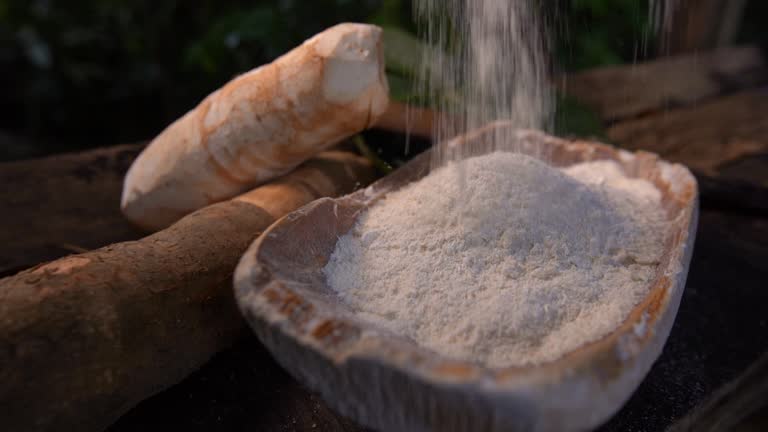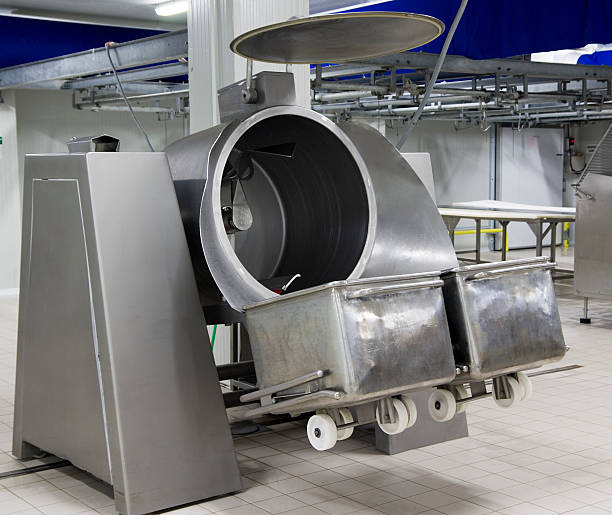Introduction – Current State of Play: The Starch Sector in Sri Lanka
If you’re sourcing starch from Sri Lanka in 2025, you’re stepping into a market that’s been anything but stable. As of September 24, 2025, the starch sector in Sri Lanka is feeling the brunt of a perfect storm: severe droughts, policy misfires, and global trade headwinds.
Let’s break it down. Early 2025 brought unusually dry weather that hit agriculture hard. Paddy fields shriveled, coconut palms underperformed, and tea plantations wilted under the heat. The numbers are sobering — a 4.2% drop in paddy production, a 22% plunge in tea output, and coconut yields down a staggering 31.6% year-on-year.
This agricultural slump has shaken the starch supply chain. With less rice and fewer coconuts, raw material sourcing has become a high-stakes game. Meanwhile, the government’s price controls have backfired, fueling shortages and pushing some trading underground. And if that weren’t enough, the U.S. slapped a 30% tariff on Sri Lankan coconut-based products in August, threatening an industry that supports over 800,000 people.
So, what does this mean for starch buyers? It means being agile. It means being informed. And it means choosing your suppliers wisely. That’s where platforms like Freshdi come in, offering real-time insights, supplier verification, and market intelligence to help businesses stay ahead.
Deep Dive – Market Movers: Recent Developments and Consequences
The starch market hasn’t seen major investment surges or tech revolutions in recent months, but that’s not to say it’s standing still. The market is moving — just not in the usual direction.
Instead of expansion, we’re seeing contraction. The droughts have reduced raw material availability, directly affecting starch production. Farmers are shifting priorities, and some processors are scaling back operations or diversifying their product lines to hedge risks.
What’s next? With import substitution gaining traction due to local shortages, we may see more niche starch varieties — think cassava or sweet potato starch — gaining ground as alternatives to traditional rice or corn-based options.
Top 6 Verified Starch Suppliers in Sri Lanka – Navigating Current Market Realities
In a volatile market, credibility is everything. These six suppliers have maintained strong reputations, consistent export records, and positive reviews on Freshdi — making them top picks for July 2025.
1. Lions Roar Trading Private Limited
Lions Roar has shown agility in adapting to Sri Lanka’s changing agricultural conditions. Known for maintaining robust supply chains even during disruptions, they’ve earned high marks for reliability and quality assurance.
2. Krishnasamy Rajendran
A trusted name in agricultural exports, Krishnasamy Rajendran continues to deliver consistent starch volumes. Their deep relationships with farmers and processing units give them an edge in sourcing high-quality native starches.
3. Thambili Exports LLC
Thambili Exports has a strong international presence and a reputation for meeting tight delivery schedules. With a growing focus on organic and specialty starches, they’re a go-to for niche buyers.
4. One Capital Global Private Limited
One Capital Global is known for its diversified portfolio and solid logistics network. They’ve adapted rapidly to the coconut tariff situation by exploring alternative markets and starch sources.
5. Iceylon Commodities Pvt. Ltd.
Iceylon focuses on quality compliance and international certifications. Their starch offerings are consistently tested and tracked, making them ideal for buyers needing transparency and traceability.
6. Essmark Worldwide Pvt. Ltd.
Essmark stands out for its flexibility. Whether you’re looking for bulk starches or customized blends, they offer scalable solutions that are especially valuable in this unpredictable market.
🟢 Dynamic Ranking Note: Keep in mind that supplier performance can shift monthly. Platforms like Freshdi offer dynamic rankings — including “Suppliers of the Month” — based on buyer activity, fulfillment scores, and real-time market adaptation.
Market Navigation – Strategic Responses to The Current Starch Landscape in Sri Lanka
So how should businesses adapt to this rollercoaster market?
First, reassess your risk exposure. If you’re heavily reliant on rice-based starch, consider diversifying into alternative sources like cassava or tapioca. These crops tend to be more drought-resistant and could offer better supply stability.
Second, revisit your sourcing regions within Sri Lanka. Areas less affected by droughts, such as the wet zones in the central highlands, may offer more consistent crop yields and, by extension, more reliable starch production.
Third, evaluate your supplier readiness. Are your partners equipped to handle export delays? Do they have contingency plans for raw material shortages? This is where Freshdi becomes invaluable — their supplier verification tools and RFQ tracking help buyers identify who’s truly ready to deliver.
And finally, stay updated. With global and local regulations shifting rapidly, yesterday’s strategy might not work tomorrow. Platforms like Freshdi provide near real-time alerts that can make the difference between profit and loss.
Conclusion – Key Takeaways for Businesses in a Dynamic Market
Let’s recap. The starch market in Sri Lanka is under pressure from all sides — weather, policy, and global trade. But with the right knowledge and partners, it’s still navigable.
Here’s what you need to remember:
- Weather matters. Droughts have slashed crop yields, directly impacting starch production.
- Policy has consequences. Government controls, while well-intentioned, have led to shortages and market distortions.
- Global trade is shifting. U.S. tariffs are pushing exporters to rethink their strategies and product mixes.
Buyer’s Checklist for July 2025
✅ Diversify starch sources (e.g., cassava, sweet potato)
✅ Vet suppliers for drought resilience and fulfillment capacity
✅ Monitor global trade policies affecting exports
✅ Use Freshdi to track dynamic RFQ trends and supplier performance
✅ Stay alert to local weather and crop forecasts
The Road Ahead: A Future Outlook
Looking forward, we may see a pivot toward more climate-resilient crops and decentralized production hubs. Technology will play a growing role — from satellite crop monitoring to AI-powered demand forecasting. Buyers who lean into data and agility will have the upper hand.
Platforms like Freshdi are empowering buyers by giving them the tools to act fast, source smart, and build resilient supply networks in the face of uncertainty.
FAQs
1. Why has starch become harder to source in Sri Lanka recently?
Because of severe droughts that have reduced paddy and coconut yields — the two main sources of starch in Sri Lanka. Combine that with policy and trade changes, and the supply chain has become strained.
2. What types of starch are most affected?
Rice starch and coconut starch are the most impacted due to falling crop production. Buyers are now looking toward cassava and sweet potato starch as alternatives.
3. How can I find reliable starch suppliers in Sri Lanka?
Use verified B2B platforms like Freshdi. They offer supplier reviews, export histories, and performance metrics to help you make informed choices.
4. Are there any government plans to support the starch sector?
Yes, but results have been mixed. Price controls and import policies have tried to stabilize the market, but they’ve also caused some disruptions.
5. Is now a good time to invest in Sri Lanka’s starch industry?
It depends on your strategy. If you can adapt to a volatile environment and build strong local partnerships, there are still opportunities — especially in niche or alternative starch markets.





